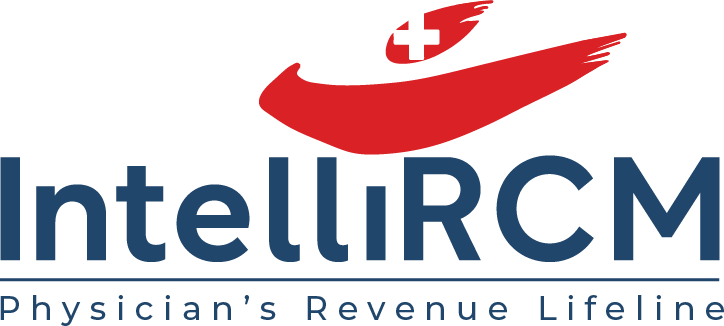By intellircm
24th Mar 2023
Blog
Efficient patient appointment scheduling makes the operations of any healthcare facility run more smoothly. A patient must have an appointment before a provider can see and treat them. When setting up many weekly appointments, having a sophisticated scheduling system in place is crucial. If it’s time to optimize patient scheduling at your practice, you need to understand the importance of appointment systems. Here, we’ll explain the importance of
patient appointment scheduling, how to improve it, and the best practices.
What is patient appointment scheduling?
Proper patient scheduling is one of the most necessary aspects of maintaining a successful medical practice. A scheduling platform allows for appointment creation, two-way patient communication, and inquiry management. When used strategically, the process provides the following:
- Fewer delays in care: Scheduling software can alleviate barriers to care for some patients.
- Streamlines patient data collection: This leaves less room for errors when patients fill out the information themselves.
- Reduces no-shows: When patients are informed of their appointment times, it decreases the likelihood of them forgetting.
- Improves patient experiences: It can get better appointment times and add to patient satisfaction.
- Increases staff productivity: Office workers can spend more time on patient care instead of scheduling and entering data.
- Optimizes appointment management: A streamlined process reduces room for errors and miscommunications that take time to correct.
Striving for these outcomes allows practices to remain in good standing with their patients and finances. Keep reading to discover how your practice can ensure its patient appointment system operates at its maximum potential.
How Patient Scheduling Can Be Improved in 5 Ways
If reading this, a practice’s staff has started to wonder, “Well, how can patient scheduling be improved?” the remainder of the article comprehensively lists ways to improve the patient appointment system.
1. Give patients a self-scheduling option
Providing patients with a convenient
online portal to schedule appointments offers an excellent solution to clunky scheduling processes. Self-scheduling has proven desirable for both patients and staff. For patients, it’s easier to view a calendar and see an office’s availability online than have a back-and-forth conversation over the phone confirming or denying options. This option also clears up the office staff’s schedule when they usually engage in these conversations.
An online scheduling option reduces errors or miscommunication for patients and staff, offering a more accessible and stress-free way to create, change, or cancel appointments.
2. Give patients a self-scheduling option
Staff must learn to prioritize the most urgent cases because these people need care immediately, even if someone else has had an appointment scheduled in advance. It’s also important to consider the likely amount of time an appointment will take. The length of time depends on the potential procedures required and the number of questions a patient has.
Some patient questions may come to a resolution by email or phone call.
Telehealth can also provide sufficient patient help in some instances.
3. Give patients a self-scheduling option
Since the COVID-19 pandemic outbreak,
73% of consumers say they prefer to receive medical updates through text messages. As opposed to waiting in the office, texting and email often give patients a safer and more user-friendly way to respond to brief inquiries from their providers. Sending reminders this way allows patients to confirm, reschedule, or cancel their appointment right from their phone or computer. They are often more likely to respond to a message than a phone call or voicemail. Make sure the software can accept replies if you plan to receive them.
Set up appointment reminders to go out to patients in increments that work best for the practice. Text and email appointment reminders reduce no-show appointments, enabling practices to maximize time and
revenue.
4. Give patients a self-scheduling option
Though unfortunate and inconvenient, late cancellations and no-shows are inevitable when running a medical practice. To reduce time and money wasted when a patient cancels an appointment, have a waiting list to fill the slot.
In the event of a cancellation, many systems can automatically send notices to people who may want to accept the open appointment slot. Not allowing a slot to go unfilled means the canceling patient’s revenue will not be lost.
5. Give patients a self-scheduling option
Effective patient rescheduling can pose challenges for any healthcare practice. Taking advantage of an automated appointment program handles most of the manual footwork. Automatically tracking and reaching out to follow-ups also helps ensure people return for their appointments.
This method also pertains to annual or routine appointments. It can keep a consistent stream of appointments more manageable for people, especially those who find making time to return to the office more challenging.
Final Thoughts on Patient Appointment Scheduling
We hope this provides insight into how patient appointment scheduling can be improved for maximum benefit to practices and the patients they serve. Optimal patient scheduling can be easily achieved by prioritizing appointments, giving patients a self-scheduling option, confirming appointments, maintaining a waiting list, and using automated follow-up software.
To improve practice efficiency, consider partnering with a company experienced in growing healthcare facilities.
IntelliRCM provides expert telehealth, virtual assistance, and revenue cycle management for healthcare practices.
For help with patient appointment scheduling, contact our revenue cycle management team or call +1 (917) 779-8700.






